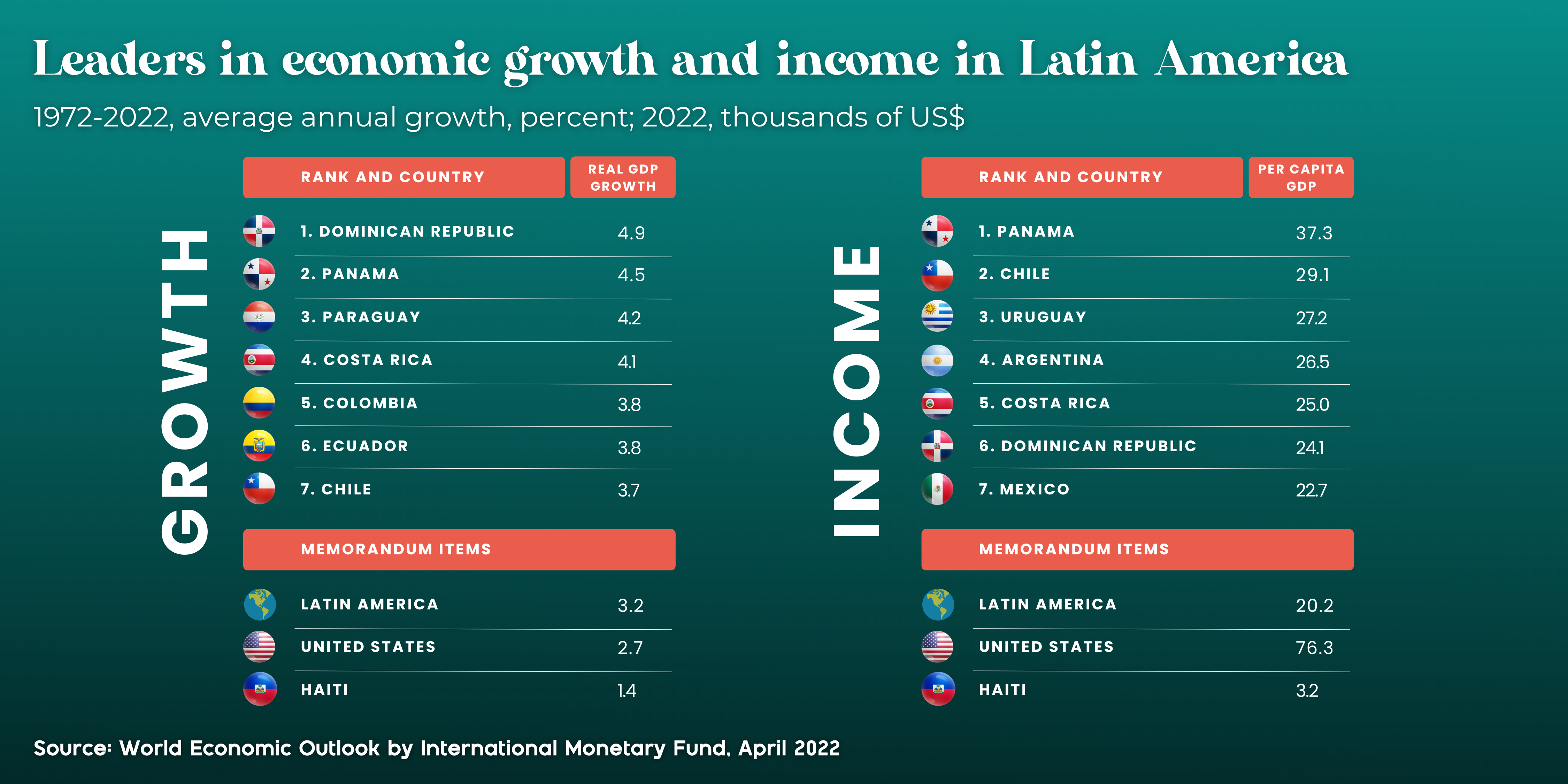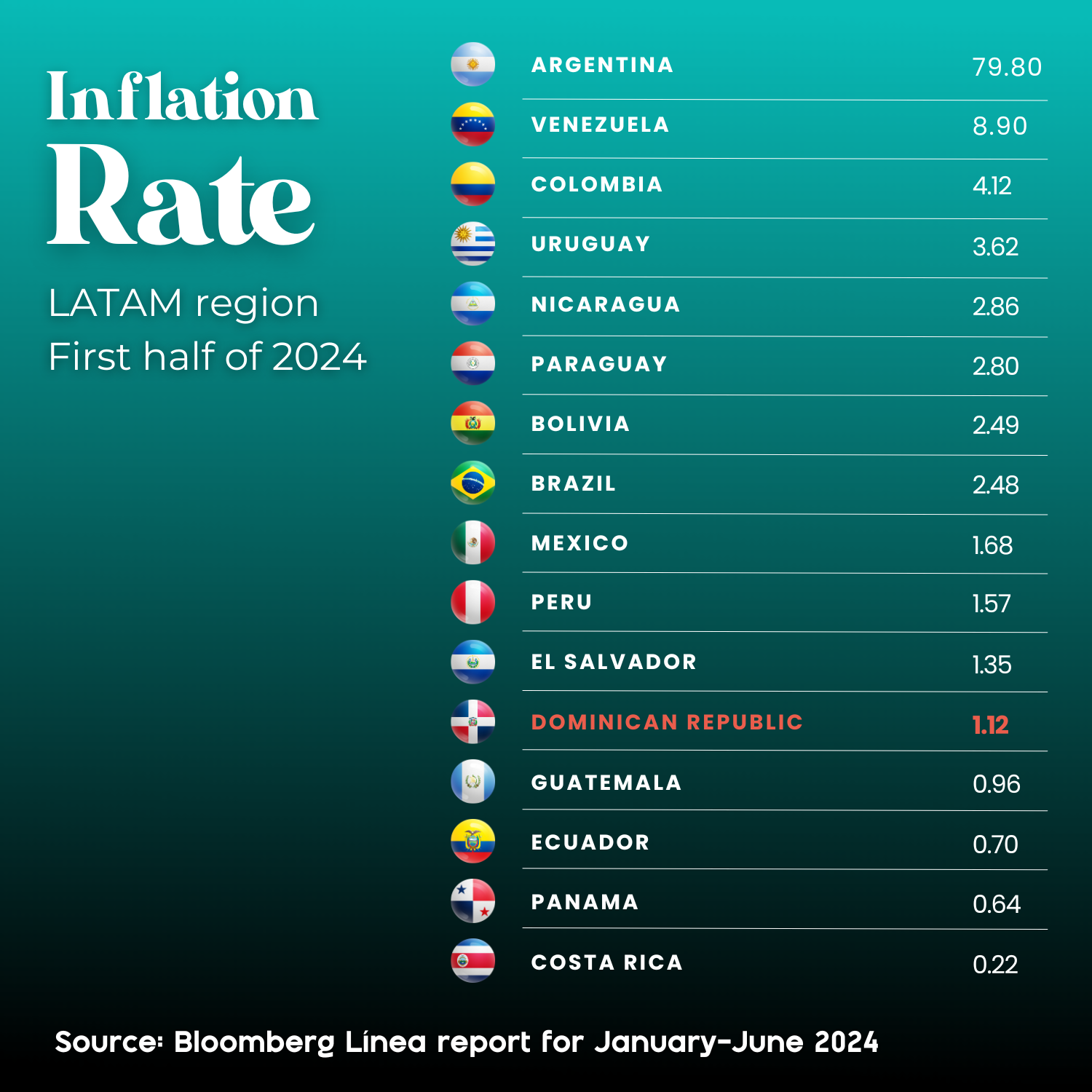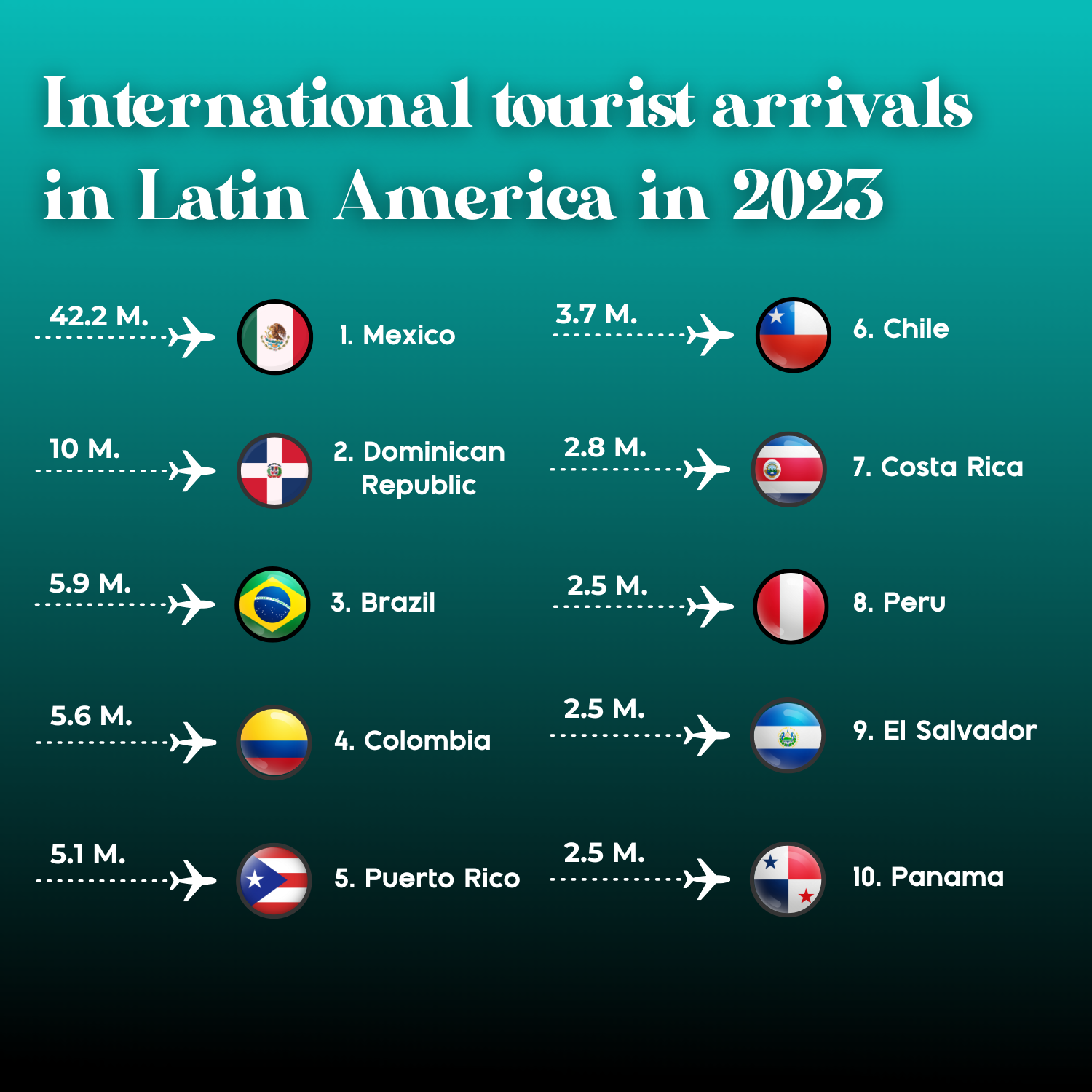How the Dominican Republic Climbed LATAM’s Economic Ladder
The Dominican Republic has quickly become one of Latin America’s most remarkable economic success stories. Despite a modest population of just 11 million, the country welcomes more than 10 million tourists annually and consistently outperforms its regional peers in terms of economic growth. This article examines the strategic choices and key factors that have driven the Dominican Republic’s impressive economic transformation.
Surpassing LATAM in economic growth
This small Caribbean nation, once best known for its beaches and agriculture, is on its way to becoming one of the most advanced economies in the region. Over the past five decades, its GDP growth has averaged around 5% a year, a rate that far outpaces other Latin American countries, according to the International Monetary Fund (IMF) and the World Bank. The IMF has lauded the country for its remarkable ability to close the income gap with wealthier nations faster than any other Latin American economy.

This transformation is striking when you consider that in the 1990s the country’s GDP was just over $9 billion. Today, it has surged to more than $100 billion! While larger Latin American economies such as Brazil and Mexico have struggled with political instability and slower growth, the Dominican Republic stands out as a beacon of stability and opportunity in the region – already achieving 86% of Brazil’s GDP per capita and 76% of Mexico’s.
Such extraordinary growth has transformed the country from a low-income nation to a middle-income economy. And the story doesn’t end there: according to the IMF, the Dominican economy is expected to continue growing at an annual rate of 5-6% over the next decade. With sustained reforms and strategic investments, the IMF predicts that the Dominican Republic is on track to become an advanced economy within the next 40 years.
From agriculture to industry: Key shifts
Economy diversification
Historically, the Dominican economy has been heavily dependent on agriculture, particularly sugar, coffee and tobacco. While tourism has long played an important role, it wasn’t until the early 1990s that the country began to lay the foundations for more sustainable, diversified growth. This transformation was sparked by structural reforms that focused on liberalising the economy and encouraging foreign direct investment (FDI).
In the early 1990s, the Dominican Republic lifted restrictions on foreign investment and introduced free trade zones (FTZs). These zones offered significant tax incentives and critical infrastructure, attracting multinational corporations eager to capitalise on the country’s strategic location and competitive labour market. Initially focused on textiles, FTZs adapted over time, particularly with the rise of global competition from China in the early 2000s. The Dominican Republic pivoted towards more sophisticated sectors such as medical devices and electronics.
Today, the Dominican Republic is the largest exporter of medical devices in the region, with over 80 FTZs housing hundreds of companies in high-value industries such as electronics, pharmaceuticals and advanced manufacturing. This transition from agriculture to more technologically advanced industries has been one of the main drivers of the country’s sustained economic growth.
Banking crisis and fiscal discipline
Another pivotal moment for the Dominican economy came in the early 2000s, following a severe banking crisis in 2003. The crisis led to a sharp rise in inflation, a collapse of the Dominican peso and a contraction of the economy. Faced with collapse, the government turned to the International Monetary Fund (IMF) for financial assistance, which led to a series of crucial economic reforms.
Under the IMF’s guidance, the Dominican government implemented strict measures to control spending and borrowing. These reforms included cuts in electricity and fuel subsidies for businesses, reductions in the public wage bill and fiscal policies aimed at maintaining macroeconomic stability. As a result, the government developed a disciplined approach to debt management and avoided the heavy borrowing that plunged other Latin American economies into crisis.
Several external factors also played a role in stabilizing the economy during this period. For example, the Dominican Republic benefited from the fall in global oil prices, as the country is a net importer of fuel. In addition, the country’s gold exports increased, providing a much-needed boost to the economy.
These reforms, combined with favorable global conditions, helped the Dominican Republic emerge stronger from the crisis. Over the past two decades, the country has maintained a conservative fiscal policy that has strengthened its economic stability and kept inflation under control. Today, the Dominican Republic boasts one of the lowest inflation rates in the entire LATAM region, at just 1.12% for the first half of 2024.

Innovation and sustainable development
A key aspect of the Dominican Republic’s economic strategy is its commitment to innovation and sustainable development. The government has prioritized renewable energy projects, with solar and wind farms being developed across the country. By 2023, renewable energy will account for approximately 16,5% of the country’s total energy production, with ambitious plans to increase this to 25% by 2030.
In parallel with its focus on clean energy, the Dominican Republic has positioned itself as a growing hub for technological innovation. The country is capitalizing on its competitive labor market and strategic location to build a service-oriented economy, particularly in outsourced business services such as human resources, legal support and IT services. With a young, increasingly tech-savvy workforce, the Dominican Republic is well placed to expand its role in the global services market.
Political stability
A key factor in the Dominican Republic’s remarkable economic growth has been its long-standing political stability. Since the 1960s, the country has avoided violent political coups, unlike many other countries in the region. Instead, the Dominican Republic has been characterized by peaceful political transitions, gradual stabilization and continuous development. This political calm has provided a solid foundation for economic growth, attracting both domestic and foreign investors.

In recent years, the country has enjoyed a particularly stable political climate under the leadership of the Modern Revolutionary Party (PRM), led by President Luis Abinader. Abinader, a former tourism executive, has been in power since 2020. His administration has built on a pro-business stance in line with the policies of previous governments, further boosting investor confidence.
In the 2024 general election, Abinader and the PRM secured another term with a significant margin of victory, reflecting widespread public support for their economic policies and leadership. The clear mandate reaffirms the Dominican public’s confidence in the government’s ability to lead the nation through sustained economic growth while maintaining stability.
A magnet for foreign investment
The Dominican Republic’s political stability has been a key factor in attracting substantial foreign direct investment (FDI), with the government actively promoting an investor-friendly climate. Under the administration of President Abinader, the country has further strengthened its economic ties with the United States, its largest trading partner. The US is a significant contributor to FDI in the Dominican Republic, particularly in key sectors such as tourism, real estate and manufacturing.
In 2023 alone, the United States accounted for over 30% of total FDI in the Dominican Republic. This investment supports vital industries ranging from advanced manufacturing to the growing services sector. The Dominican Republic’s strategic location and well-developed infrastructure make it an ideal hub for US companies operating in Latin America and the Caribbean.
Beyond the United States, the Dominican Republic has developed important partnerships with other international players. Spain, for example, is one of the country’s largest European investors, with Spanish companies heavily involved in the tourism and infrastructure sectors. Similarly, Canada plays an important role, particularly in the mining and energy sectors. These relationships not only diversify the country’s investment base, but also contribute to its reputation as a stable, growth-oriented destination for international capital.
Tourism: Still a pillar of growth
Tourism remains one of the Dominican Republic’s most important economic sectors. In 2023, the country welcomed over 10 million tourists, a number almost equal to its total population! The country’s pristine beaches, vibrant culture and growing luxury property market continue to attract visitors from around the world, with tourism accounting for around 8.1% of GDP.
What sets the Dominican Republic apart in the regional tourism market is its diversification. While traditional resorts in Punta Cana and Santo Domingo continue to thrive, newer, eco-friendly tourism projects such as those on the Samaná peninsula are attracting a different demographic of travelers interested in sustainability and adventure. In addition, domestic tourism has soared in recent years, suggesting that rising incomes are allowing more Dominicans to participate in their country’s tourism industry.

On a LATAM scale, the Dominican Republic stands out as the second most popular tourist destination after Mexico. But over the past decade, the Dominican Republic has seen a 40.8% increase in tourist arrivals, compared to Mexico’s 20.4%. This surge in tourism reflects the growing appeal of the Dominican Republic to international travelers, particularly from the US.
In 2023, more than 3 million American tourists visited the Dominican Republic, accounting for nearly 30% of the total 10 million visitors. Other important nationalities include tourists from Canada, Colombia, Spain, France and Germany.
The Dominican Republic’s success in attracting such a high volume of tourists, particularly from the US, is largely due to its geographical proximity, well-developed tourism infrastructure and favorable climate. These factors, combined with the country’s reputation for safety and hospitality, have helped make it one of the top tourist destinations in Latin America.
Real Estate: A growing trend for foreign investment and settlement
The Dominican Republic has increasingly become a hotspot for foreign property investment, particularly for individuals looking for a second home, a retirement destination or even a permanent move. The country’s attractive climate, relatively low cost of living and proximity to the United States have made it a preferred choice for Americans and other foreign investors looking to buy property in the Caribbean.
According to recent data, Americans make up a significant portion of foreign buyers in the Dominican property market. Many of these investors are not just buying holiday homes, but are relocating permanently or establishing their second homes for future retirement. The country’s appeal has grown in the wake of the pandemic, as remote working and lifestyle changes have led many to seek more flexible living arrangements in desirable locations.
Tax incentives driving the real estate boom
One of the main drivers behind this surge in foreign property investment is the Dominican Republic’s favorable tax environment. The government has introduced a number of tax incentives to attract both individual property buyers and larger property developers.
Foreign investors can benefit from no property taxes for the first 15 years, a significant financial incentive that reduces the overall cost of owning property in the country. In addition, the absence of inheritance and capital gains taxes on certain property investments has further cemented the Dominican Republic’s status as a top destination for those looking to invest in Caribbean real estate.
CONFOTUR Law: Encouraging large-scale real estate investment
In addition to favorable tax conditions, the Dominican Republic has introduced legislation specifically designed to attract large-scale real estate development. The CONFOTUR Law (Law 158-01), or Tourism Development Incentive Law, plays a central role in encouraging investment in the country’s tourism and real estate sectors. This law provides a number of tax benefits, such as exemption from import taxes on construction materials and exemption from transfer taxes on the sale of real estate.
CONFOTUR also offers income tax exemptions for up to 10 years for properties that qualify under the law’s guidelines, which include developments in tourism-heavy areas. This incentive has led to a surge in resort and residential projects throughout the country, particularly in regions such as Punta Cana, Samaná and Puerto Plata. The benefits of the CONFOTUR law have spurred a wave of luxury property development, with both local and international developers taking advantage of the reduced costs. For foreign buyers, CONFOTUR-certified properties not only promise tax savings, but also the opportunity to invest in high-quality, tourism-oriented developments that promise strong returns.
The Dominican Republic’s remarkable economic transformation is the result of decades of steady growth, diversification and sound governance. From a small, agrarian nation, it has become one of the most promising economies in Latin America, attracting tourists and investors alike as it continues its journey towards becoming an advanced economy!